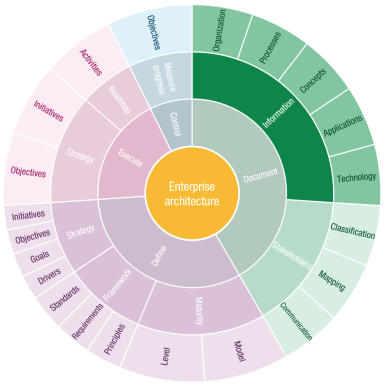The first step in stage one of the Enterprise Architecture Implementation Wheel method involves gathering information about the organization, including its layout, hierarchical relationships, and influencers. Therefore, it is important to talk to people within the organization. One-on-one interviews often yield more information than the documents created to depict the organization. This approach can also be used to learn about the organization’s processes, information, applications, and IT systems.

Gathering information
Talking to people in the organization is tremendously helpful when gathering information. They worked for the organization before the decision to start using architecture was made. Employees have the best view of how the organization works. They know what processes are performed and what applications and technologies are used to support them.
Organizational language
At this stage of the inventory, use the organization’s terminology and try to speak its language. Conversations about definitions can always come later. Are people talking about a process when, in architecture, it should be a business function? If so, just call it a process during the conversation. Defining whether something is a business function or a process will come eventually. At this point, it would only cause confusion. It may even discourage people from sharing the information sought.
Architecture artifacts and deliverables
The following architecture artifacts can be created during the first step of the first stage of the Implementation Wheel. Use these architecture artifacts to capture the information you find and store it in the Architecture Repository. Creating these artifacts provides a solid foundation for the Enterprise Architecture. This foundation can be built upon over time and supplemented with all sorts of catalogs, matrices, diagrams, and maps.

